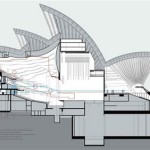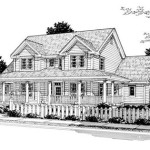Delving into the Essential Aspects of the White House Floor Plan: Second Floor
The second floor of the White House, designated as the "Residential Floor," holds immense historical significance and architectural charm. This level of the iconic building is primarily reserved for the private living quarters of the President and their family, offering a glimpse into their personal lives amidst the grandeur of the White House.
Upon ascending the Grand Staircase, visitors are greeted by a sweeping view of the Center Hall, a spacious and elegant reception area adorned with exquisite chandeliers and artwork. This expansive hall serves as the central point of the second floor, connecting various rooms and corridors.
To the left of the Center Hall lies the East Room, a majestic state room renowned for hosting official receptions, ceremonies, and other significant events. Boasting intricate moldings, soaring ceilings, and opulent furnishings, this grand chamber exudes an air of grandeur and formality.
Adjacent to the East Room, the Green Room serves as a smaller, intimate reception area offering a serene ambiance. Its vibrant green walls, intricate ceiling, and impressive fireplace create a welcoming atmosphere for private meetings and gatherings.
On the opposite side of the Center Hall, visitors encounter the Blue Room, a stunning state bedroom traditionally used to welcome foreign dignitaries. Decorated in hues of blue and gold, this elegant chamber features an elaborate ceiling, crystal chandeliers, and a grand fireplace, reflecting the grandeur of the White House.
To the right of the Blue Room, the Red Room serves as the state dining room, where formal dinners and receptions are held. Rich crimson walls, elaborate tapestries, and an ornate fireplace accentuate the room's regal ambiance, creating a perfect setting for official state occasions.
The second floor also includes the President's private living quarters, which provide a sanctuary away from the public eye. The President's Bedroom, located in the southeast corner of the floor, offers stunning views of the South Lawn and the Washington Monument. Adjacent to the bedroom lies the President's Study, a quiet and private retreat where the President can conduct official business.
The second floor of the White House offers a unique blend of grandeur and intimacy, reflecting the dual nature of the President's role as both a public figure and a private individual. From the opulent state rooms to the private living quarters, this level of the building provides an intimate glimpse into the lives of the most powerful person in the United States.

Second Floor White House Tour Plans
Photos Show The White House Interior Where Naomi Biden Got Married

The History Of Oval Office White House Floor Plans Usa

Plan Of The Second Floor White House Library Congress

Second Floor White House Interior Plans

The White House Archisyllogy

History Of The White House 1792 1814 Best In American Living

What Is On The Second And Third Floors Of White House Quora

Whitehouse Layout White House Plans Tour Floor

The Devoted Classicist White House President S Dining Room








